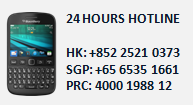USA

US marine casualty reporting
In April 2013 the US Coast Guard (USCG) notified the industry that forms CG-2692 “Report of Marine Casualty” and CG-2692B “Report of Required Chemical Drug and Alcohol Testing Following a Serious Marine Incident” had been revised. Although there are apparently not many substantial changes from the previous versions of these forms, the USCG emphasises in a recent notice that the new forms are the only approved versions that will be accepted for reporting a marine casualty.
Members and clients with vessels operating in US waters should ensure that their fleets have available the most recent versions of the US marine casualty report forms and commence using these immediately. It is also important to ensure that crews and operational personnel are well aware of the requirement to immediately notify the USCG of any hazardous conditions or casualties onboard, as failure to report a vessel’s hazardous condition could be considered a criminal act, see article “US law - Crew's failure to report hazardous condition aboard vessel” published in Gard News 202 (2011).
Additional information
- Where to find the marine casualty report forms: The most recent versions of forms CG-2692 and CG-2692B are available online in pdf-formatted versions on http://homeport.uscg.mil and by following the following menu path: Missions > Investigations > Casualty Reporting Forms.
- When to use a marine casualty report form: With few exceptions, commercial vessel operators are required to report a casualty immediately if it occurs upon the navigable waters of the US. The criteria for what constitutes a reportable incident are set out in 46 CFR 4.05-1. Groundings, bridge strikes, losses resulting in reduced vessel manoeuvrability, impacts on vessel seaworthiness or fitness for service or route, loss of life, injury requiring professional medical treatment, property damage in excess of USD 25,000, or significant harm to the environment,1 are all examples of casualties that should be reported. (The electronic Code of Federal Regulation (CFR) can be accessed using the link: www.ecfr.gov.
A phone call or fax to the USCG typically satisfies the immediate initial notice requirement; but formal report of the incident, in the form of CG-2692 must also be filed within five days. If the a marine casualty can be defined as a serious marine incident in accordance with 46 CFR 4.03-2 (one or more deaths, discharge of oil of 10,000 gallons or more, damage to property in excess of USD 100,000 are common examples), the report must also be supplemented by CG-2692B. In many instances it may be useful to obtain advice from the local correspondent or Gard (North America) before submitting anything in writing to the USCG.
- New development: Confusion as to which marine casualties need to be reported has persisted in the marine industry for years. There is also some confusion as to whether a particular incident qualifies as a marine casualty. InJanuary 2014 the USCG announced the availability of draft guidance in the form of a Navigation and Inspection Circular (NVIC) entitled “Title 46, Code of Federal Regulations (CFR), Part 4 Marine Casualty Reporting Procedures Guide with Associated Standard Interpretation.” The NVIC, once finalised, should assist shipowners and operators in determining if occurrences must be reported or not to the USCG as well as resulting in more consistent USCG enforcement in areas where there has been confusion in the past.
The time limit for comments to the draft NVIC was 14 April 2014 but as far as Gard is aware, the NVIC has not yet been finalised and no specific finalisation date has been announced. Members and clients are therefore advised to monitor the progress of the proposed guidance.
A copy of the draft NVIC is available under Docket ID: USCG-2013-1047 on www.regulations.gov. Click here for a direct link. Once finalised, the NVIC is likely to be available on the “Investigations” subpages on http://homeport.uscg.mil.
1 A Gard Insight Article: “Marine oil spills in the US – planning, response, and consequences – a visual understanding of the overall system” will be published in the near future.





